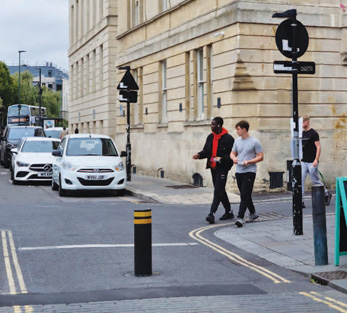A public inquiry is the latest step in the move in Britain’s historic city centres towards greater denial of peak-hour traffic, for counter-terror among other reasons. The March print edition of Professional Security magazine featured similar progress towards bollards controlling daytime access to historic centres of Canterbury, York and Bath.
The public inquiry will be held on Tuesday, April 26 by an inspector appointed by the Secretary of State for Transport. The inquiry from 10am will be in the Brunswick Room at the Guildhall, High Street.
The inspector appointed is Rory Cridland who will consider the traffic regulation order which relates to the closure of York Street, in the city centre. The proposed closure is between 10am and 6pm for (in the local government wording) ‘the purpose of anti-terrorism and between 6pm and 10pm for the purpose of preventing the likelihood of any such danger arising and for preserving or improving the amenities of the areas through which the road runs’.
While in its submission to the inquiry Bath and North East Somerset Council (Banes) as the traffic authority reports contact with counter-terror police from 2017, bollards to stop ‘vehicle as a weapon’ attacks are not proposed only for ‘protective security’ reasons. Other factors are protection of heritage (as a spa town, Bath is a Unesco world heritage site) and the needs of visitors and others – the disabled drivers of blue badge vehicles who want access to shops and services; and businesses who want to see customers (but as some submissions make plain, see danger to pedestrians from traffic).
Police in their submissions to the inquiry state that Bath like similar places ‘presents an attractive target to self-initiated terrorists seeking to use a low sophistication attack’. Hence bollards, in the jargon ‘hostile vehicle mitigation (HVM)’, ‘seen as an effective and proven security measure to protect crowded places’ such as Bath streets with high footfall; and the proposed Anti-Terrorist Traffic Regulation Order as ‘a proportionate and measured tactic to assist in the protection of the centre of Bath’. The police acknowledge that the council ‘needs to balance the needs of the public to go about their normal business and other activities’.
As in other places, those who would have permission to enter the bollard-protected zone would have to call the council’s ‘CCTV Hub’, such as ambulances (including private ones) and utility and construction companies, and the council’s own service vehicles. Cash in transit (CIT) companies for example would have to call the CCTV Hub and provide at least two-hour notice in advance of arrival, the council submission states.
Photo by Mark Rowe, on-street bollard, Lower Borough Walls, Bath.









